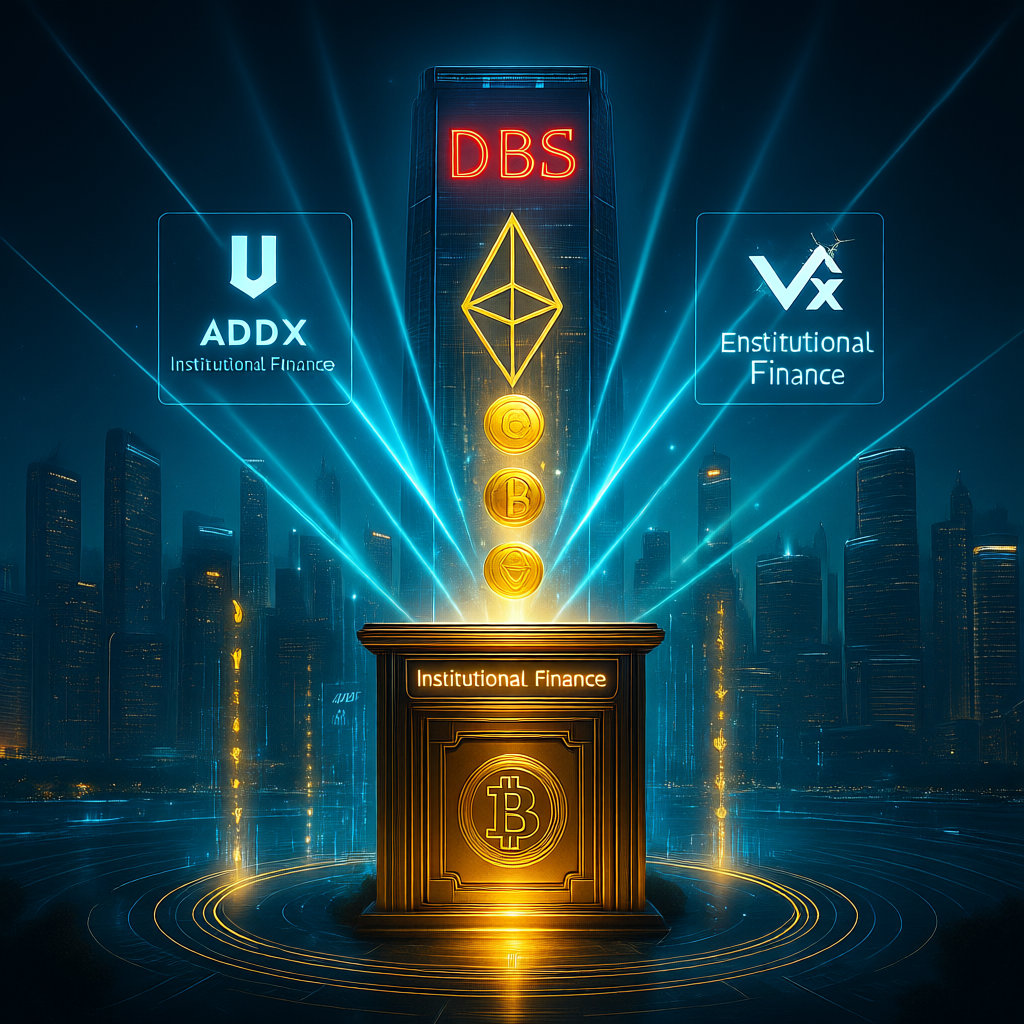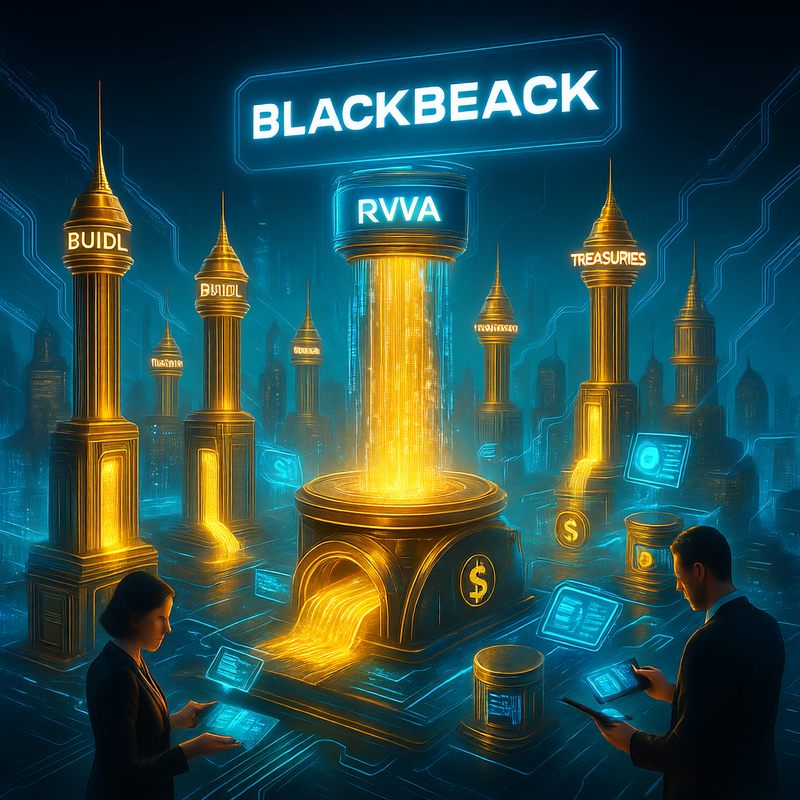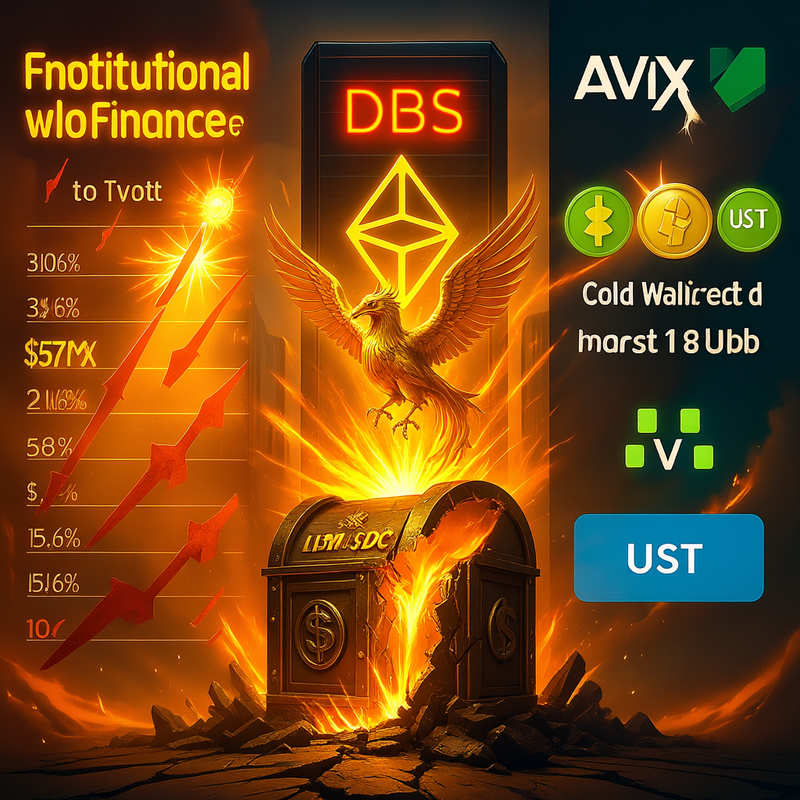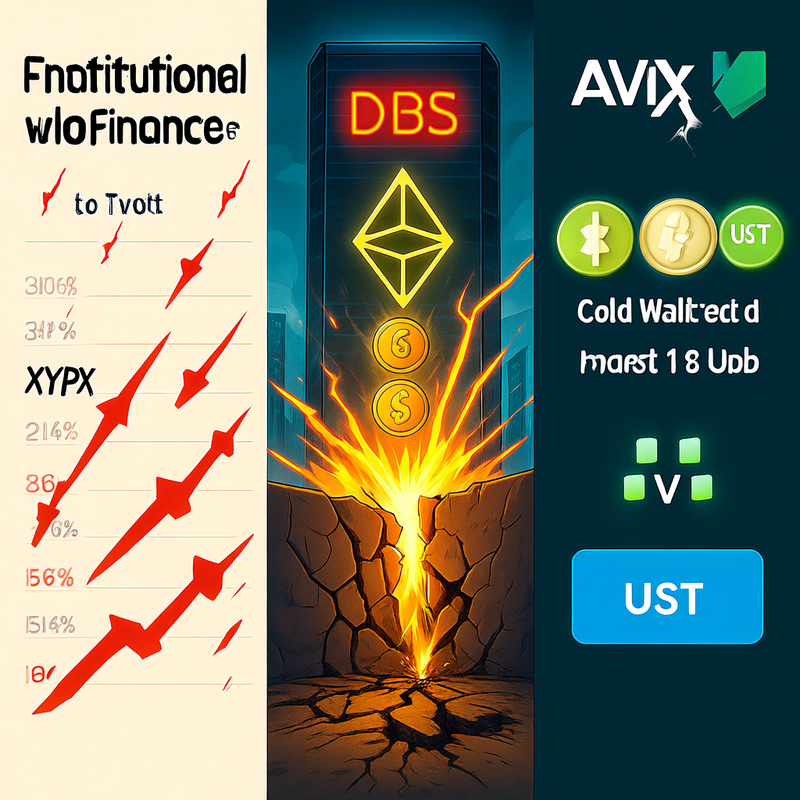DBS Launches Ethereum-Based Tokenized Crypto Notes — A Watershed Moment for Institutional DeFi
DBS has launched tokenized structured notes on the Ethereum blockchain, offering institutional investors exposure to crypto with capped downside and cash-settled upside. Backed by regulated platforms like ADDX, DigiFT, and HydraX, this move signals a new era of institutional-grade on-chain finance.

A Historic Step: DBS Brings Structured Products On-Chain
In a landmark move for traditional finance, DBS Bank — Southeast Asia’s largest bank — has issued tokenized crypto-linked structured notes on the Ethereum blockchain.
This isn’t a pilot.
It’s not a sandbox experiment.
It’s a live, regulated financial product available to qualified and institutional investors through compliant digital exchanges:
- ADDX (Asia’s first regulated digital securities exchange)
- DigiFT (MAS-licensed digital asset platform)
- HydraX (Avalanche-based institutional DEX)
By choosing Ethereum, DBS is betting on the most battle-tested, secure, and widely adopted public blockchain — a clear signal that permissionless networks are ready for prime-time finance.
The Product: A Smarter Way to Gain Crypto Exposure
The first offering is a participatory note — a derivative-style instrument that tracks the performance of crypto assets without requiring direct ownership.
Key features:
- Upside Participation: Investors receive cash settlements when crypto prices rise.
- Capped Downside: Losses are limited if the market falls — a crucial risk control for conservative institutions.
- No Self-Custody: No need to hold private keys, manage wallets, or navigate compliance hurdles.
This structure is ideal for:
- Asset managers seeking diversified exposure
- Family offices wary of volatility
- Institutions restricted from holding crypto directly
It’s DeFi meets TradFi — with Ethereum as the bridge.
Why Ethereum? Trust, Scale, and Interoperability
DBS didn’t pick a private chain or a niche L1.
It chose Ethereum — the same network powering Uniswap, Aave, and $90B+ in DeFi TVL.
Why?
- Security: Over a decade of attack resistance and battle-hardened consensus.
- Liquidity: Deep pools of capital and institutional-grade infrastructure.
- Interoperability: Seamless integration with Layer-2s, custodians, and tokenization rails.
- Regulatory Familiarity: Ethereum-based tokens are increasingly understood by global regulators.
This decision validates Ethereum not just as a smart contract platform, but as the backbone of next-gen capital markets.
Tokenization Momentum: The Future Is On-Chain
DBS’s move is part of a broader institutional shift toward tokenized real-world assets (RWAs).
From money market funds to bonds, private equity, and now structured notes, financial giants are realizing that:
- Blockchain reduces settlement time from days to minutes.
- Smart contracts automate compliance and payouts.
- Tokenization improves transparency and auditability.
And with partners like ADDX and DigiFT providing regulated access, the path from traditional finance to Web3 is no longer theoretical — it’s operational.
Implications for Ethereum and DeFi
This launch is more than a one-off product.
It’s a strategic endorsement with far-reaching consequences:
- Increased ETH Utility: Ethereum becomes the settlement layer for institutional-grade securities.
- TVL Growth: As more RWAs launch on Ethereum, DeFi protocols gain access to trillions in traditional capital.
- Regulatory Clarity: Projects like this help define how crypto can coexist with compliance.
- Cross-Chain Synergy: HydraX’s involvement (on Avalanche) hints at multi-chain institutional strategies.
For skeptics who said “Ethereum is too slow” or “too expensive,” DBS just responded:
“We trust it with real money.”
The Bigger Picture: Finance Is Going On-Chain
What DBS has done may seem quiet — a single structured product on a public blockchain.
But it’s a tectonic shift.
It proves that:
- Banks can issue regulated digital securities without sacrificing control.
- Investors can gain crypto exposure without the risks of self-custody.
- Public blockchains can serve as secure, transparent, and scalable financial rails.
And if this model scales, we could see tokenized equities, bonds, and derivatives flowing through Ethereum in the coming years.
Final Outlook: The Dawn of Institutional On-Chain Finance
DBS didn’t just launch a product.
It launched a precedent.
One that says:
The future of finance isn’t just digital — it’s tokenized, transparent, and trustless.
And with Ethereum at the center, the line between DeFi and TradFi is dissolving — one structured note at a time.





